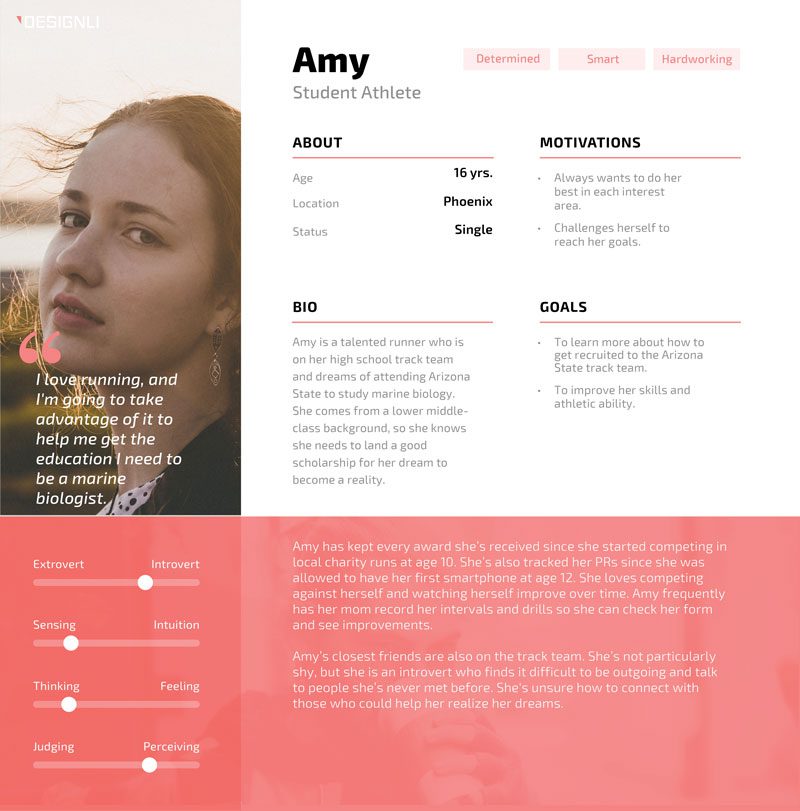Know When Paying for a Premium Domain is Worth It
Your domain name has a big impact on your business. Choose the right one, and you have a brandable web address that people remember. If you select...
3 min read
Written by Laura MacPherson, Oct 10, 2019

It’s important to understand your users’ needs and wants in order to effectively design, build, and market products they will love. Creating data-driven personas to represent your user types is a key way to learn what’s important to your users and to understand their needs.
This article will show you how to build user personas, the key components you should include, and why they are so critical for success.
A user persona is a detailed fictional representation of each user type fueled by real data reflecting their behaviors, motivations, and goals. Personas are especially helpful in prioritizing which features to include in your product and what to leave out.
Using well-crafted personas ensures that your development team is considering the users’ needs throughout the process by bringing them to the forefront of planning at every step. Referring to a persona instead of raw data makes it easier to visualize the user. Because you’re working with your users in mind, you can better determine the best course of action in the process of building a product.
Constructing a solid user persona starts with data, as a persona is only as effective as the data used to create it. Here are four steps for how to build user personas that deliver accurate insights.
Take the time to map out your approach and to be crystal clear about what you want to achieve. What tools will you use? Who will you survey? Who will you interview? What questions will you ask? Can you observe prospective users in their working environment to get a feel for their workflow?
Write your survey and interview questions giving thought to what you want to accomplish. Make sure you’re not creating leading questions that will bring about expected or desired results. Use open-ended questions since your goal is to understand the way your users think and act.
Condense the information by looking for themes that are specific and relevant. Then, identify patterns to organize elements into groups that represent your target users.
Use the groupings you created to build to personas. Review responses to the open-ended questions to add details and color to the personas you created.
A persona funnels data about a user segment into a fictional character, along with other useful information that is relevant to your business. It’s important to focus on behavioral drivers, mindset, and attitudes as this will help your personas to become full representations of real people. User personas should include the following:
Personalize your persona by adding a name and a description. Calling your persona, “Patty, Part-Time Working Mom” makes your persona more relatable. You need to quickly get a feel for who this persona represents. Be as specific as possible to ensure clarity.
Put a face to a name by adding a photo. Stock photos are useful since they aren’t images of people you know in real life. Additionally, consider the context of the image as that can provide further insight into the persona.
What would this persona typically say and how might they react to your product? Knowing this helps us to further get to know the persona. Pull or create quotes from the research.
Share your persona’s story. What do they do for work and how do they spend their free time? Include demographics like age, gender, location, income, marital status, number of children, and any other relevant information about their background, lifestyle, and behaviors.
Is this person extraverted or introverted? Impulsive or a planner? This section helps to round out the user persona by providing better insight into their personality.
What are your persona’s aspirations? What do they need to get them where they want to be? Having a clear picture of goals and needs can directly help you to understand what your product should provide for this user group.
What drives this persona and what’s preventing them from attaining their goals? Understanding motivations and frustrations will help you to understand how this persona thinks and may behave.
Once you pull all of this information together, you have a much better picture of your user groups. Repeat this process for each user type, and as a result, you’ll have a robust group of user personas to represent your customer segments.

Using data-driven personas to inform decision-making ensures that the development process is focused on your users, increasing the likelihood of building something they’ll love.
Want to learn how we help you hone your app idea, through our SolutionLab process? Get in touch, and we’ll schedule a call.
Subscribe to our newsletter.

Your domain name has a big impact on your business. Choose the right one, and you have a brandable web address that people remember. If you select...

Startup funding often brings to mind dramatic pitch moments in front of investors, similar to the scenarios seen on Shark Tank. However, for most...

Ramping up sales for a new product takes time. It’s a process that relies on advertising, PR, and word of mouth, and it doesn’t always happen as...
Post
Share